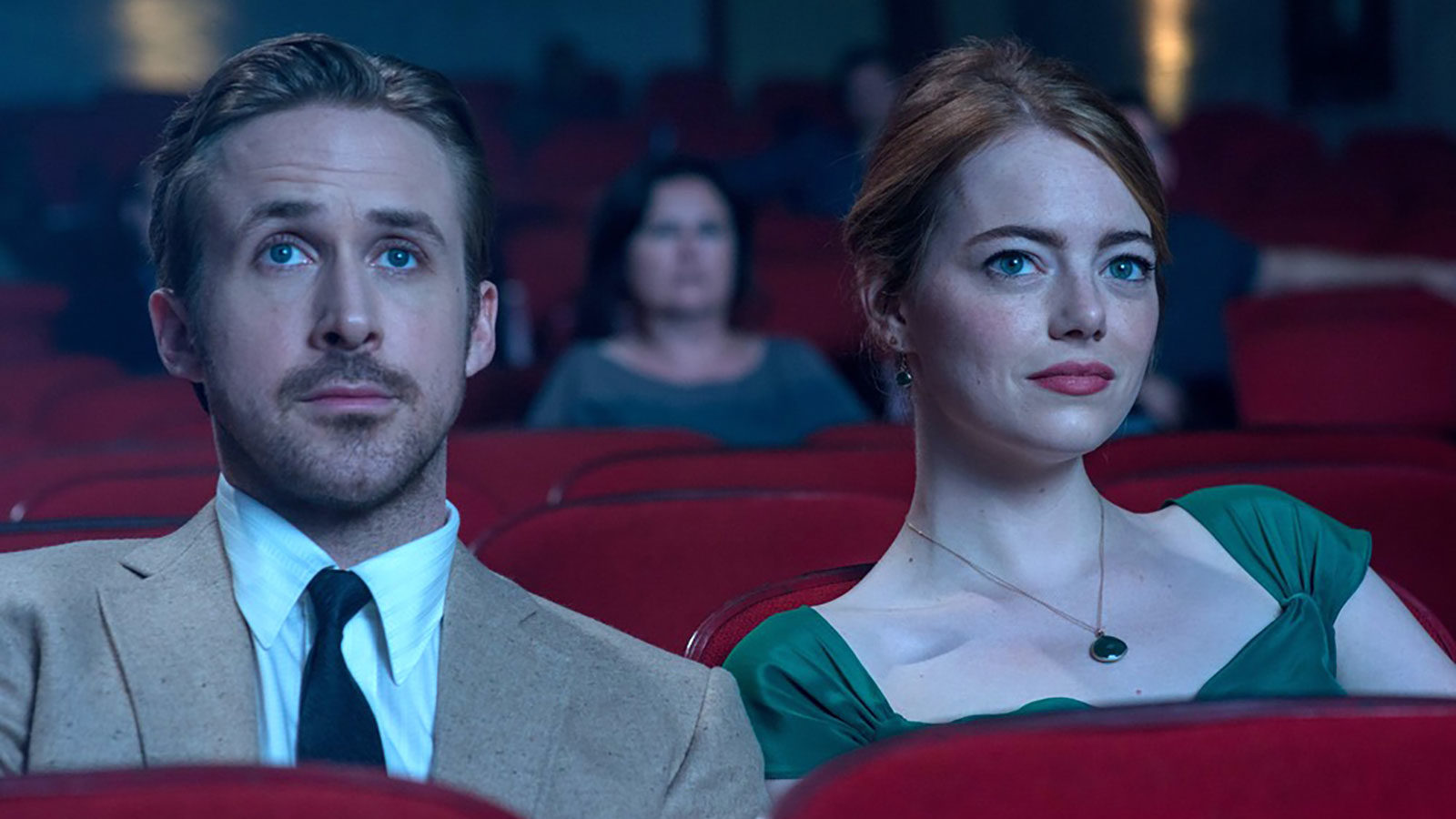By Michael Koresky in the January-February 2017 Issue

The Missing Piece
Nostalgia masquerading as neoclassicism was the false promise of ballyhooed hits
You can almost see it emblazoned across a bright red ballcap: make movies great again. That’s a clear central theme and purpose of Damien Chazelle’s instantly beloved musical La La Land—so clear, in fact, that it effectively works as marketing, PR copy, and statement of artistic intent all at once. A heck of a lot separates that message from the similar one Trump made the cornerstone of his presidential campaign—including, you know, depths of feeling and an investment in the inner creative and spiritual lives of human beings—but there’s an undeniable bluntness to Chazelle’s film, a need to hector and pummel the viewer into submission with an aggressive aesthetic of nostalgia. With its pointedly outmoded on-screen depiction of a buzzing Hollywood backlot; its scrubbed-clean, lily-white version of the City of Angels circa 2016; and its unmistakable desire to return to a state of coddled movie-made innocence, all set to a mix of throwback show tunes and Dave Brubeck–lite jazz, La La Land is the kind of journey-back-in-time escapism that makes dissenters seem like ingrates. It offers undeniable craft, but also brilliantly strategized messaging, flattering its audience for being part of the chosen few who get it. If you buy in, you too can be a part of the future-past.

From the January-February 2017 Issue
Also in this issue
The search for authenticity is a common theme in Western art, recurring in several movies of this new century, from Terry Zwigoff’s Ghost World and Sylvain Chomet’s The Illusionist to Terrence Malick’s Knight of Cups and Jim Jarmusch’s Paterson. In La La Land, that search is undercut by the fact that it’s ersatz by design, that it’s in constant reference to its own qualities, lending the film the inescapable sense that its impeccable, classical “craft” is purely functional. Whether this writer mostly enjoyed La La Land or not (I surely sometimes did, except for the flat feet and wispy warblers) seems to matter less than what and who the film is trying to court. If the film’s constant refrain is to remind viewers of lost things—real musicals, real jazz, real romance, real movies—what hole is it trying to fill and with what?
I won’t be the first or last to note that over the past decade-plus we’ve been so disappointed and mistreated by a Hollywood interested more than ever in the financial bottom line and emerging global markets, that viewers are now ultra-sensitized to the slightest display of professionalism. Such films are often marked as “old-fashioned,” and accompanied by a relieved exhalation. So Loving becomes the kind of empathetic, committed social-issue drama “you just don’t see anymore.” The Shallows is the kind of mid-range genre entertainment “you just don’t see anymore.” Hell or High Water is the kind of masculine cops-and-robbers B picture “you just don’t see anymore.” What happens then is a kind of simultaneous overestimating and devaluing of cinematic aesthetics, so that Emma Stone’s beseeching emotionality in her climactic solo number blows people away by force of the simplicity of her placement before the camera. With Hollywood more eager to supply CG penguins approximating human behavior than humans acting like humans (all of the top 10 grossers of 2016 at the time of this writing were either largely animated creature features or comic-book adaptations), the simple power of a “real” woman standing before a camera, emoting to us in close-up, carries an oddly regenerative power.
So like a smudge of rouge against an ashen-gray, pallid face, La La Land can’t help but stand out in American cinema in 2016. The problem with wishing for outmoded forms—for sighing with relief that finally someone has come to save cinema from itself, an indie “outsider” who’ll be working from the inside like a covert operative—is that it can blind you to the reality of what else is going on. This year many adventurous homegrown movies were blazing new aesthetic trails; some have been rightly lauded enough to break through to the mainstream (Barry Jenkins’s Moonlight), while others feature approaches to narrative so radical that they’re unlikely to become more than the critical causes of a select few, like Roberto Minervini’s The Other Side or Anna Rose Holmer’s The Fits. These films look neither knowingly forward nor backward; they stay true to themselves, attuned to the moment they’re in. Of course, it’s rare that cutting-edge films are appreciated in their time, so this situation and argument are nothing new. But our hypersensitivity to the appeal of lost things does feel like a recent development—see the best picture win for The Artist five years ago. It’s why La La Land is received as not just a movie, but as a balm. We all know such fantasies are as fleeting as campaign promises.







